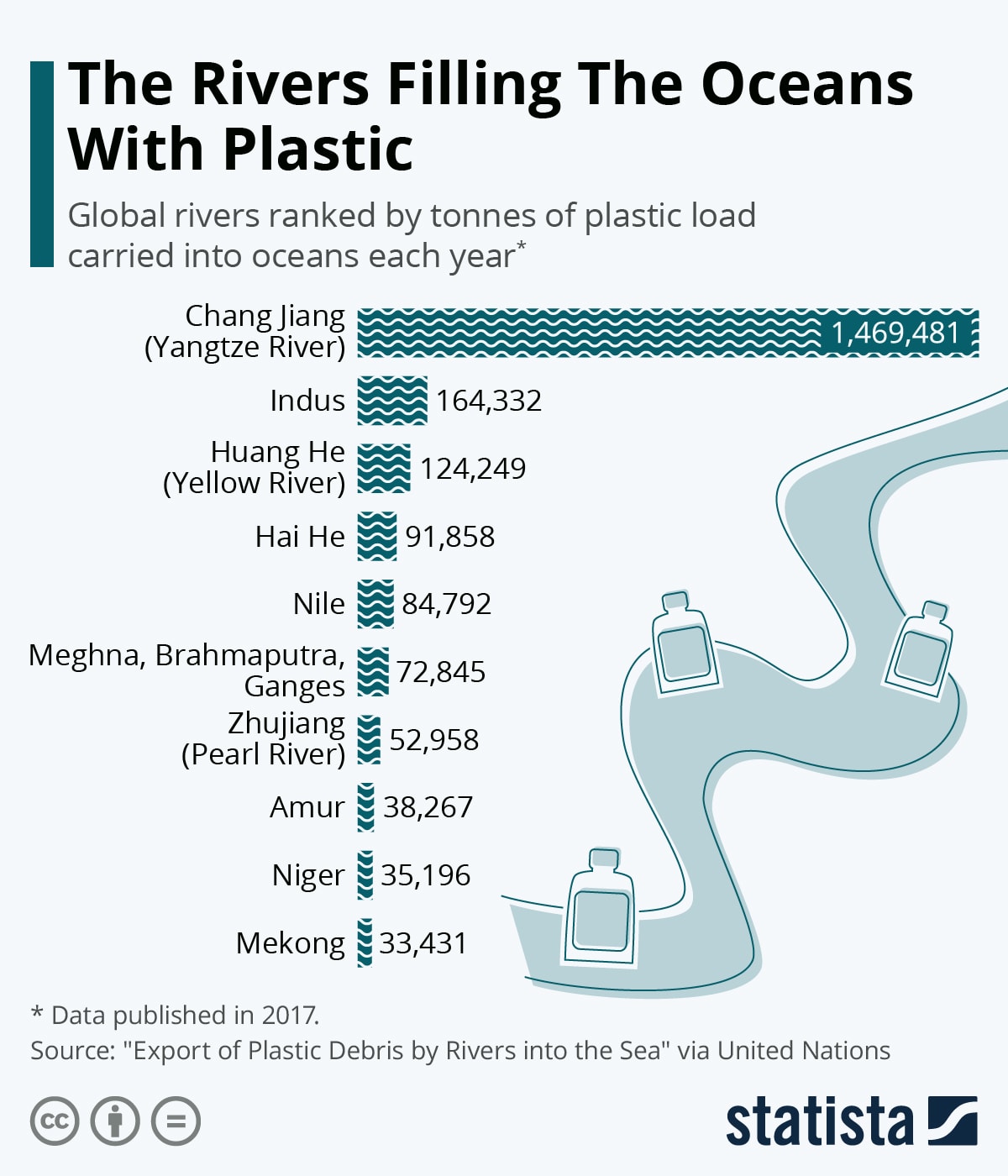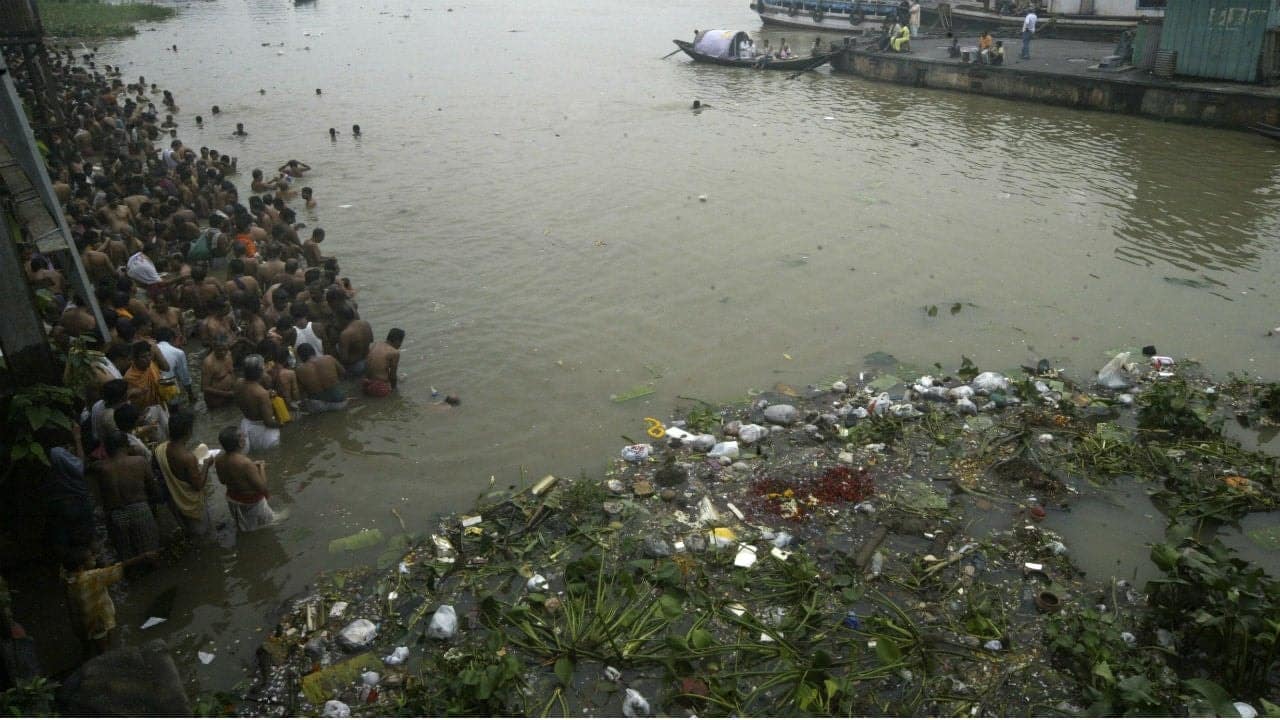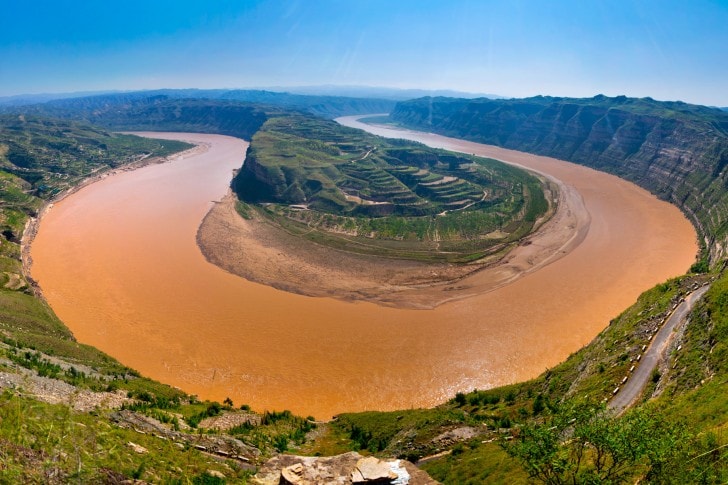Every year, contaminated water kills more people than all forms of violence combined, including war. As we enter 2025, the global water crisis has reached extreme levels. Waterbodies around the globe are choking under toxic waste, industrial discharges, and untreated sewage. Have you ever wondered about the world’s most polluted river?
River pollution represents one of the most pressing environmental challenges of our time. When hazardous substances—including industrial chemicals, raw sewage, heavy metals, and plastic waste—enter freshwater ecosystems, they create a cascade of devastating effects on human health, aquatic life, and economic stability. The scale of this crisis affects billions of people who depend on these polluted rivers for drinking water, agriculture, and daily survival.
Water Pollution That Devastates Asia
Asian waterways dominate the list of most polluted rivers globally, reflecting rapid industrialisation combined with inadequate environmental regulations. The concentration of manufacturing and dense populations along major river systems has created pollution hotspots affecting hundreds of millions of people.
- The global river pollution crisis stems from multiple sources that continue to overwhelm natural water systems across the planet. Understanding these contamination sources is crucial for addressing the widespread degradation of our most vital freshwater resources.
- Industrial discharges represent the most toxic threat to river ecosystems worldwide. Manufacturing facilities, chemical plants, and processing industries release heavy metals including mercury, lead, cadmium, and chromium directly into waterways. These persistent pollutants accumulate in river sediment and bioaccumulate through food chains, creating long-term environmental and health consequences.
- Untreated sewage poses the largest volume threat to global water quality. According to UN-Water’s 2024 report, over 80% of wastewater worldwide is released into rivers without any treatment. This untreated human waste introduces dangerous bacteria, viruses, and parasites that cause waterborne diseases affecting millions annually. Urban areas with inadequate sanitation infrastructure struggle to manage growing populations, resulting in raw sewage overflow during heavy rainfall events.
- Agricultural runoff creates dead zones and toxic algae blooms in rivers and coastal areas, killing aquatic life. Modern farming practices rely heavily on nitrogen and phosphorus fertilizers that wash into waterways during storms. Pesticides and herbicides add chemical contamination that persists in aquatic environments. The Mississippi River exemplifies this problem, with agricultural runoff creating an 8,000 square mile dead zone in the Gulf of Mexico where marine life cannot survive.

Image showing the world’s most polluted river; in particular with plastic waste.
- Plastic pollution has emerged as a pervasive threat to river ecosystems globally. Rivers transport approximately 90% of all plastic debris reaching our oceans, with Asian rivers contributing the largest volume. Microplastics smaller than 5 millimeters have been detected in drinking water supplies worldwide, while larger plastic waste clogs waterways and entangles aquatic wildlife.
This cycle of pollution not only threatens biodiversity but also endangers human health and food security.
The Ganges River
The Ganges River in India holds the devastating title as the world’s most polluted river. This sacred river, revered by over one billion Hindus, has antibiotic-resistant bacteria (referred to as “superbugs”). Despite serving over 500 million people across its 2,525-kilometer length, the Ganges contains toxic chemicals that exceed international safety standards by more than 1,000 times. The pollution levels in the Ganges River are so extreme that the water is officially classified as “unsafe for bathing” by India’s Central Pollution Control Board. Yet millions of religious devotees continue their daily ritual baths, unknowingly exposing themselves to dangerous bacteria, untreated waste, heavy metals, and chemical contaminants. Recent water quality assessments reveal mercury, lead, and cadmium concentrations that pose immediate health risks.
The river’s contamination stems from over 1,100 industrial units along its banks, including leather tanneries, textile factories, and chemical plants that discharge untreated wastewater directly into the sacred waters. Municipal sewage from major cities like Varanasi, Allahabad, and Kanpur adds to the toxic cocktail, creating conditions where cholera and hepatitis outbreaks occur regularly. Hence, giving it the title of thethe world’s most polluted river. Fishing communities report massive die-offs of aquatic life, while agricultural areas irrigated with contaminated river water produce crops unsafe for consumption. Healthcare costs from waterborne diseases burden millions of families, perpetuating cycles of poverty in riverside communities.

Indonesia’s Citarum River
This river, ranks as the second most polluted river globally, with mercury levels reaching 100 times above international safety standards. Over 2,000 textile factories discharge untreated wastewater containing synthetic dyes and chemical finishing agents directly into the river. The 20 million people dependent on the Citarum River face elevated cancer risks and developmental disorders from chronic exposure to heavy metals.
Bangladesh’s Buriganga River
This river has turned completely black from tannery waste and human sewage. Leather processing facilities discharge chromium and other toxic chemical waste without treatment, while inadequate sanitation infrastructure allows raw sewage to flow directly into the waterway. Fish populations have disappeared entirely, and water contact causes immediate skin irritation and respiratory problems.
The Yellow River
The Yellow River in China carries billions of tons of untreated industrial sewage and coal mining runoff. Despite being the third largest river in Asia, pollution levels have rendered large sections unsuitable for any human use. Microplastic contamination and heavy metal accumulation threaten agricultural areas dependent on the river for irrigation.

Americas and Europe’s Most Polluted Waterways
North and South American rivers face unique pollution challenges from agricultural practices and industrial legacy contamination. The scale of these waterways often dilutes pollutants, but concentrated discharge points create severe localized contamination.
The Mississippi River, Minnesota to Louisiana
The Mississippi River’s pollution primarily stems from agricultural runoff carrying fertilizers and pesticides from farms across the central United States. This nutrient pollution creates massive algae blooms and oxygen depletion that has generated an 8,000 square mile dead zone in the Gulf of Mexico where marine life cannot survive.
Sarno River, Italy
This river represents Europe’s most polluted waterway despite originating from clean mountain springs. Industrial facilities and inadequate sewage treatment have transformed this short river into a toxic channel. Agricultural runoff from the fertile Campania region adds nutrient pollution that creates algae blooms and fish kills.
The Danube River, Central and Eastern Europe
Europe’s second-longest river, the Danube river, flows through ten countries and collects pollution from agriculture, untreated sewage, and heavy industry. Fertilizer runoff contributes to nutrient overload, while industrial effluents and plastics accumulate in its waters. The Danube ultimately carries this pollution into the Black Sea, where it fuels hypoxic zones and disrupts marine ecosystems.

The Colorado River, Southwestern USA
The Colorado River is one of the most overdrawn and stressed waterways in North America, making it one of the world’s most polluted river. Heavy agricultural withdrawals, combined with runoff containing fertilizers and pesticides, degrade water quality, river sediment etc. along its course. Industrial activity, urban waste, and mining operations introduce heavy metals and chemical residues, while reduced flow from damming and overuse has concentrated pollutants. By the time the river reaches Mexico, it often runs dry, leaving behind saline, contaminated channels that damage ecosystems and agriculture alike.
Health and Environmental Impacts
Ecosystem collapse in severely polluted rivers has reached irreversible tipping points in multiple locations. Rivers receiving household waste, hazardous chemicals, human waste, contributes to the death of aquatic animals. River ecosystems that once filtered pollutants and provided natural water treatment services have lost their capacity to self-regulate. Economic losses from river pollution exceed billions of dollars annually through healthcare costs, lost productivity, and reduced agricultural yields. Communities near polluted waterways experience higher rates of cancer, respiratory diseases, and developmental disorders that require expensive long-term medical treatment.
Women who spend more time collecting water and washing clothes in polluted rivers face higher exposure to toxic chemicals. Children’s developing nervous systems make them especially susceptible to heavy metal poisoning and cognitive impairment from contaminated drinking water. The biodiversity crisis in river ecosystems pushes entire species toward extinction. Freshwater fish populations have declined by over 80% in the most polluted rivers, while amphibians and aquatic insects disappear from contaminated habitats.
Urgent Solutions for 2025 and Beyond
- Regulation: Enforce strict penalties; empower environmental police to shut down violators.
- Infrastructure: Invest in sewage plants; fund advanced treatment tech; global support needed.
- Agriculture: Promote precision farming, buffer strips; reward eco-friendly practices.
- Awareness: Educate public on pollution; proper disposal of chemicals; community monitoring.
- Global Action: Create funding mechanisms; wealthy nations share cleanup costs.
Explore our Applications pages to see how LG Sonic provides solutions for these challenges.
